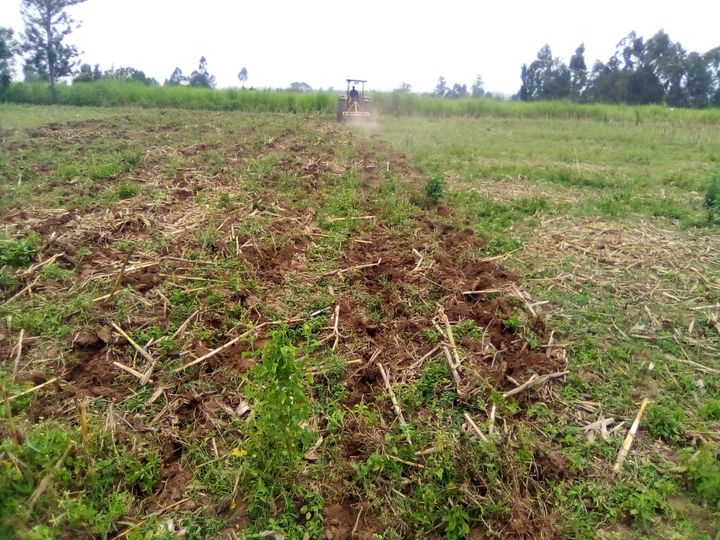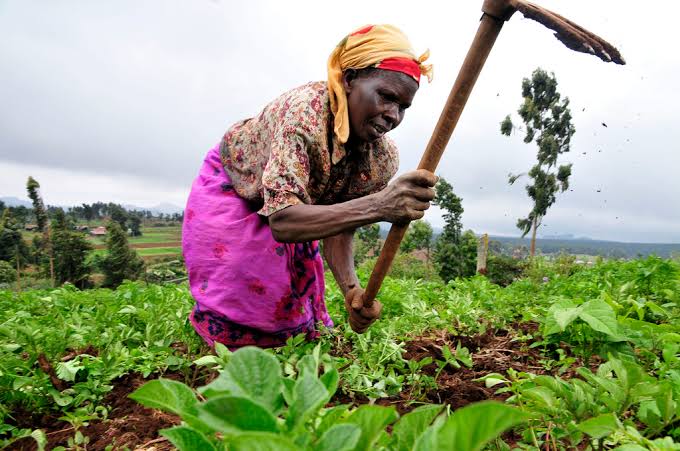
By George Munene
Through the use of ripper ploughs in conservation agriculture farmers are able to halve their production cost while advantaging themselves in ways not accessible to farmers practicing traditional conventional agriculture.
“In conventional agriculture, land preparation before planting entails first ploughing, this in Western Kenya costs a farmer Sh3000 for every acre. This is then preceded by a second ploughing which costs a similar amount. After planting farmers often practice their first and second weeding; 10 hands can weed an acre of land with each paid Sh300 for the day's work. In all, this sets a farmer back Sh12,500,” explains Geoffrey Wanjala, a field agronomist who is also Busia’s Farmer Service Centers Senior Agribusiness Coordinator.
With ripping, in conservation agriculture farmers are whittling down this to just Sh5,500 an acre. This constitutes Sh2,500 in charges for hiring a tractor-mounted ripper; buying herbicides as well as the option of hiring spray service providers each costing Sh500. In maize farming, an additional Sh1,500 is used in weeding herbicides coupled with a similar Sh500 charge in spraying cost.
Related News: 300+ extension network helps farmers hack farm to market value chain
Related News: Second-hand tractors open lower cost route for Kenyan farmers to mechanise
Ripping services are accessible to farmers across the country through satellite Farmer Service Centres available in 12 counties across the country. This is a network of over 300 agricultural extension workers that help farmers aggregate their ploughing land to make it commercially feasible for ploughing service providers to work on smaller land sizes. “We have availed this service to farmers across most counties in Western, Nyanza, Rift Valley and Eastern regions,” Wanjala says.
Moreover, conservation agriculture has many other advantages that include: preserving soil structure and the intactness of soil microorganisms as the soil is minimally tilled; increasing soil fertility; reduction of water erosion—rippers are fitted with tines that penetrate the soil to a depth of up to 30 centimeters, this increases water percolation and reduces water runoff. Also, by perforating deep into the soil profile, ripping gives crop roots access to leached minerals.
Disk ploughs and hand-held hoes can only reach a depth of 10-15 centimeters, this creates a hardpan that encourages erosion when it rains by preventing water from trickling into the soil. This hardpan also causes lateral rooting which means crops are easily susceptible to drought.
Moisture conservation in arid regions—decomposing crop residue forms mulch which cools the environment around the plant’s roots. It also provides warmth over the cold season improving crop performance.
Ripping creates furrows or rip lines where fertilisers and seeds are then sowed in manually or through use of tractor mounted planters. This further reduces production costs by eliminating the need for digging holes or furrows. “Once a farmer has conducted two or three ripping sessions which would have completely broken soil hardpans, they can entirely practice zero tillage which exerts even less in planting costs by totally doing away with ploughing,” Emmanuel says.
Related News: 1Acre Nyasi program—giving livestock farmers tools to repel drought
Related News: Solar insect light trap organically reduces pests by 80%
Rippers are however limited in their use as they cannot be used to break ground for crops such as potatoes which first require to be ploughed vertically with chisel ploughs to break hard pans before ripping.
As more farmers embrace the use of ripping in land preparation, Wanjala argues the technology’s costs are only bound to reduce; “ripper mounted tractors consume less fuel than the ones fitted with disc ploughs. This makes their operationalisation far cheaper for ploughing service providers. There is currently a dearth of ripper ploughs but as more farmers opt for the use of this technology there is bound to be a corresponding increase in its service provider which will lead to a reduction in the pricing of ripping services,” he argues.
Geoffrey Wanjala: 0710454130
Write comment (0 Comments)
















